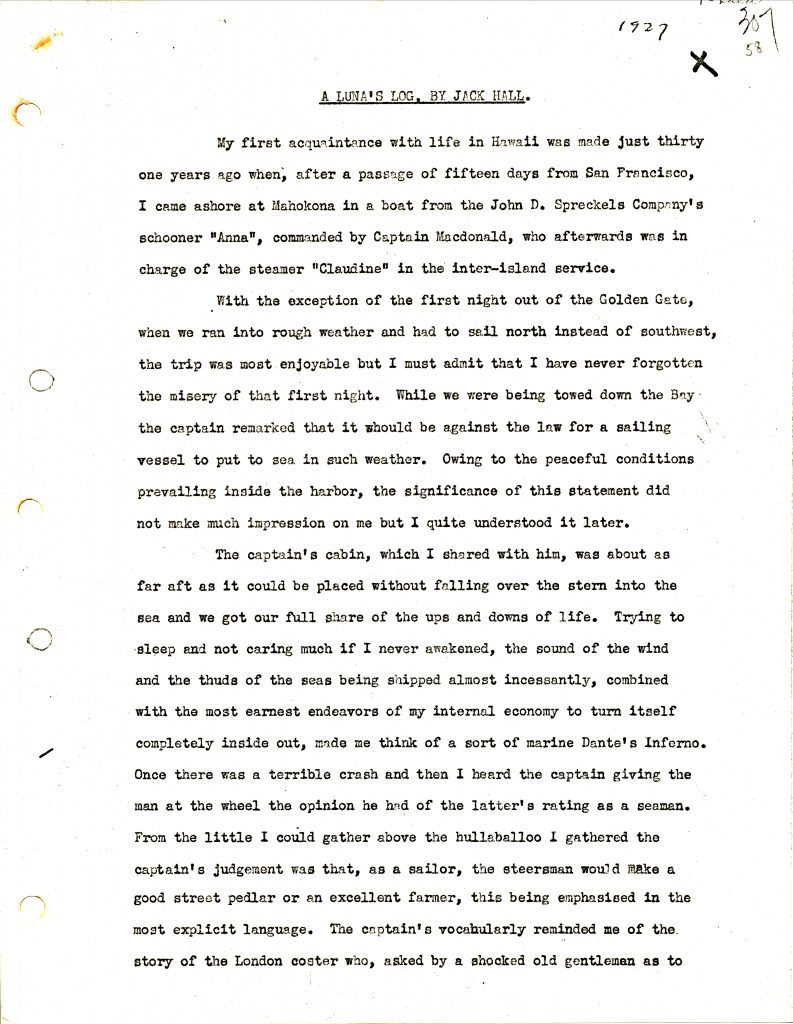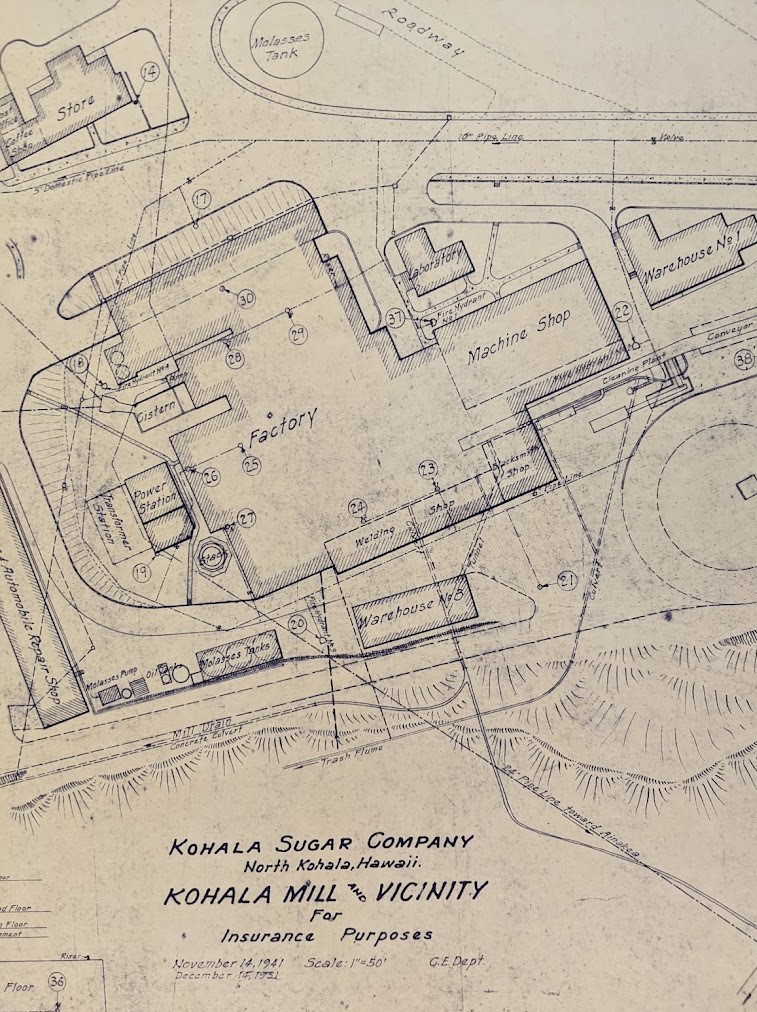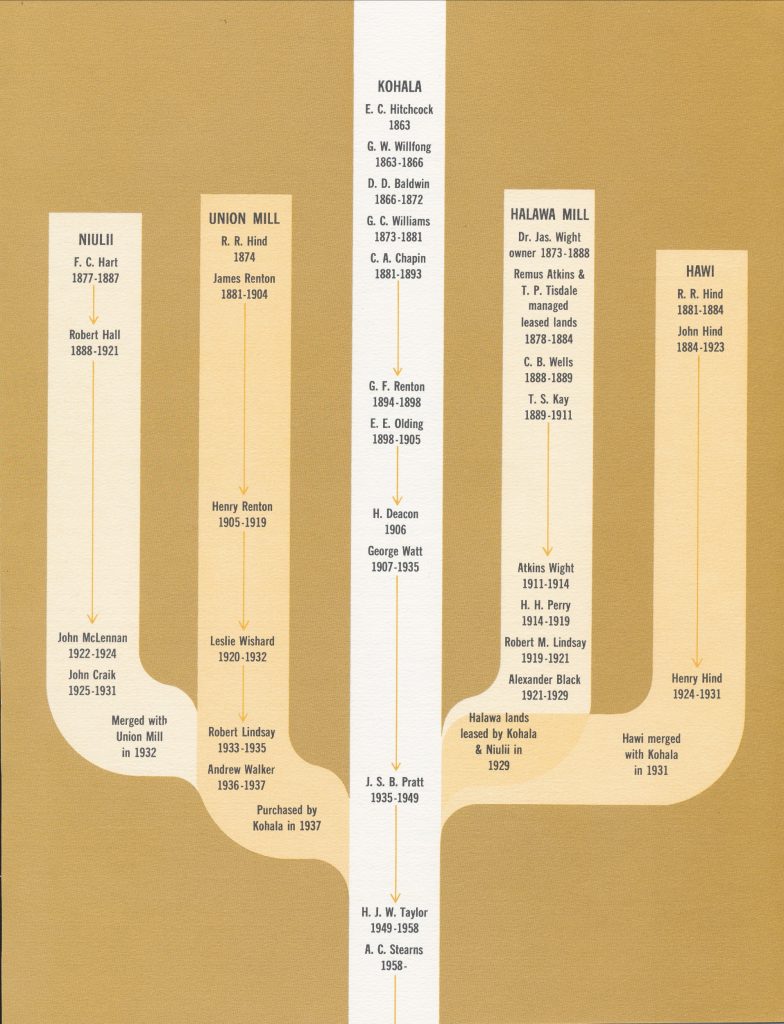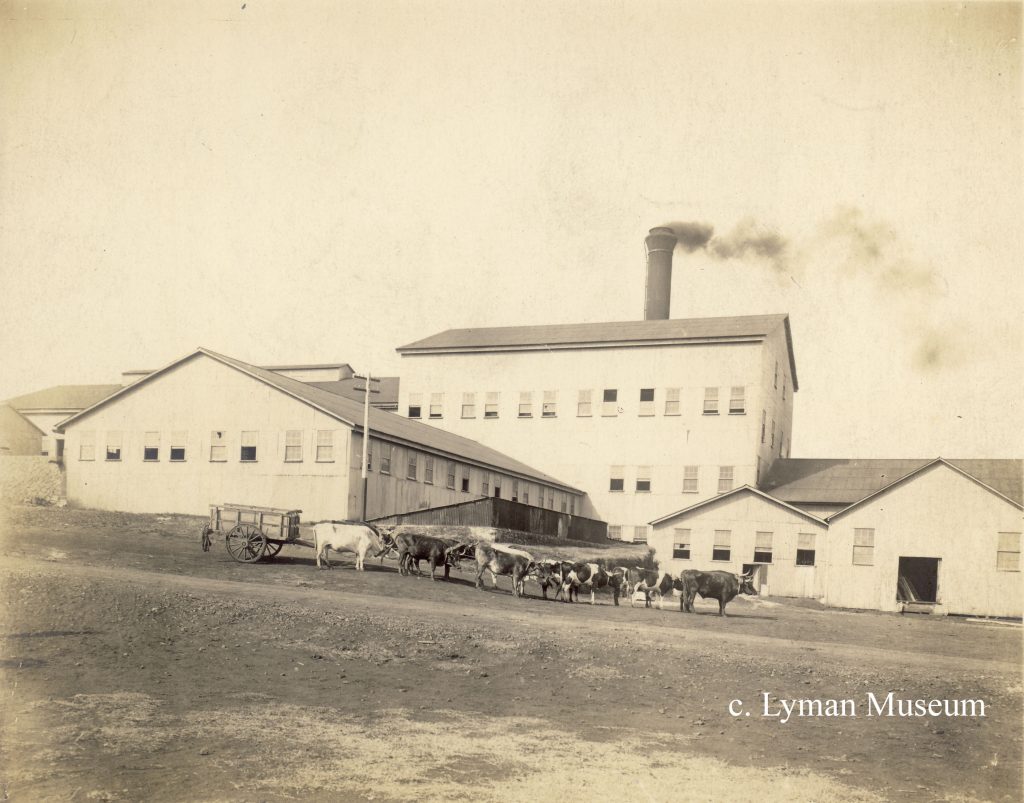Rev. Elias Bond (1813–1896) started the Kohala Sugar Company in 1863 on the Island of Hawaiʻi. Bond came to Hawaiʻi as a Christian missionary in 1841. He worried about church members leaving for work in the urban centers of Honolulu and Lahaina. He started the plantation intent on “retaining our people in Kohala nei.” Other plantations followed: Halawa Mill, Union Mill, Niuliʻi Mill, and Hawi Mill. By 1937 Kohala Sugar incorporated all of them. The companies contracted with immigrants to move to the area.
Over time, the industry developed significant infrastructure. In the 1880s the Kohala plantations cooperated in building the Hawaiian Railroad to Mahukona Harbor. In 1906 the Kohala Ditch, some 20 miles of tunnels and ditches and flumes, provided irrigation to the area. With irrigation, as well as mechanical harvesting and trucks, productivity increased.
The Kohala Sugar Company eventually operated 9,500 acres. After 110 years of operation, its closing forever affected the livelihoods of Kohala residents.
The Kohala Sugar Company Records (1857–1973) preserve various aspects of the company: administration, financial, maps and charts, production, and other companies owned by Kohala Sugar: the Hawaii Railroad Company, the Homestead Plantation, Kehena Water, Kohala Ditch, Kohala Pineapple, Mahukona Terminal, and Pacific Sugar.
The Lyman Museum preserves records from four sugar companies: Kohala, Hāmākua, C. Brewer and Hilo Coast Processing. The Archives is open for research by appointment. Learn more at https://lymanmuseum.org/archives/research-collection/.




